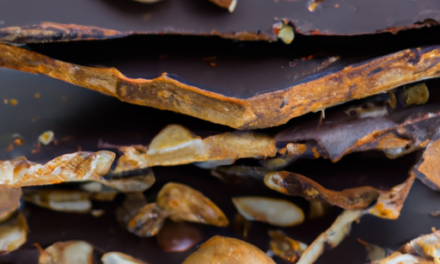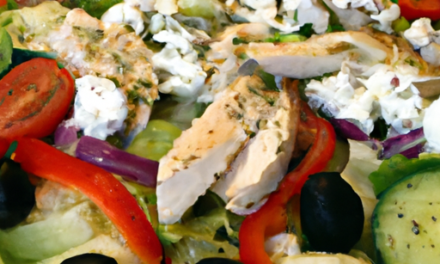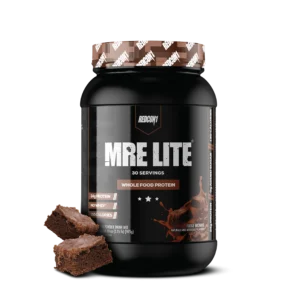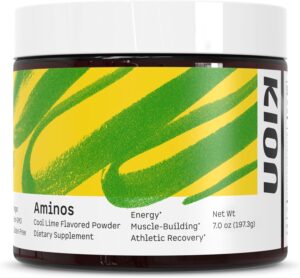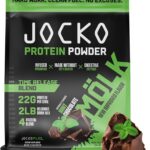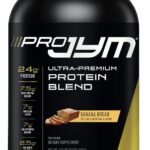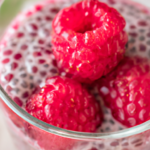
Beef Jerky
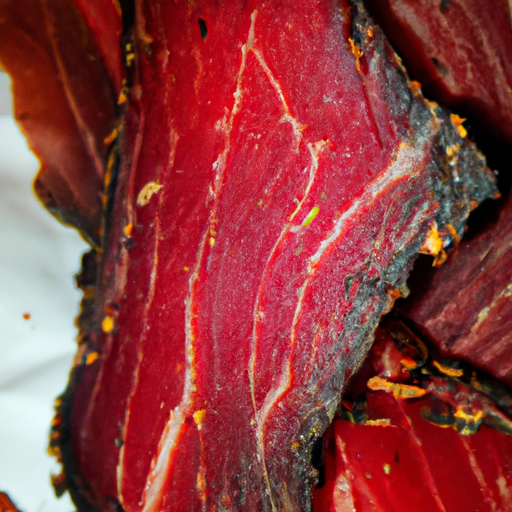
If you’re looking for a delicious and healthy snack to fuel your day, look no further than beef jerky. Whether you’re following a Paleo diet or simply trying to reach your health goals, this protein-packed treat is sure to satisfy your cravings. In this article, we’ll explore the world of beef jerky and introduce you to some Paleo-friendly recipes that will have you reaching for more. So grab a bag of your favorite flavor and get ready to discover the mouthwatering world of beef jerky!
1. History of Beef Jerky
1.1 Origins of Beef Jerky
Beef jerky has a rich history that dates back thousands of years. The origins of this flavorful snack can be traced back to ancient civilizations, where it was used as a means of preserving meat for long journeys and harsh climates. Native Americans, for example, used to sun-dry strips of meat to create a lightweight and portable source of sustenance. This method of preserving meat ultimately led to the creation of what we now know as beef jerky.
1.2 Evolution of Beef Jerky Making Techniques
Over time, the techniques for making beef jerky have evolved and improved. In the early days, meat was simply air-dried under the sun, a process that could take several days, leaving the meat vulnerable to spoilage. As technology advanced, various methods were developed to expedite the drying process while ensuring the meat remains safe to consume.
One such method involves using low temperatures and dry air, usually achieved through the use of dehydrators or smokehouses. The meat is typically marinated in a mixture of spices and seasonings, enhancing its flavor, and then placed in the dehydrator or smokehouse to remove moisture. This results in a jerky that is both tender and flavorful while maintaining a longer shelf life.
2. Nutritional Value of Beef Jerky
2.1 High Protein Content
Beef jerky is a fantastic source of high-quality protein. It is made from lean cuts of beef, which means it contains a significant amount of protein per serving. Protein plays a crucial role in building and repairing tissues, as well as supporting the healthy functioning of enzymes, hormones, and immune cells. Including beef jerky in your diet can help you meet your daily protein requirements, especially for individuals following low-carb or high-protein diets.
2.2 Low in Fat
One of the reasons beef jerky has become a popular snack choice for health-conscious individuals is its low fat content. The traditional method of making beef jerky involves trimming excess fat from the meat, resulting in a lean product. This makes it an excellent alternative to other high-fat snacks while still providing a flavorful and satisfying snack option.
2.3 Essential Vitamins and Minerals
Beef jerky is not only rich in protein and low in fat, but it also contains essential vitamins and minerals. It is a good source of iron, which helps transport oxygen throughout the body and plays a vital role in energy metabolism. Additionally, it contains B vitamins such as niacin and vitamin B12, which are crucial for brain function and the production of red blood cells.
3. Types of Beef Jerky
3.1 Traditional Beef Jerky
Traditional beef jerky is the original style of jerky that has been enjoyed for centuries. It is typically made from thinly sliced lean beef, which is marinated in a combination of spices, herbs, and seasonings before being dried. Traditional beef jerky is known for its savory flavor and slightly chewy texture, making it a timeless favorite among jerky enthusiasts.
3.2 Gourmet Beef Jerky
Gourmet beef jerky takes jerky to a whole new level by adding unique and exotic flavors. It often incorporates different types of meat, such as turkey, bison, or salmon, and combines them with an array of inventive seasonings. Gourmet beef jerky is often handcrafted in small batches, using high-quality ingredients, resulting in a more sophisticated and flavorful snacking experience.
3.3 Organic Beef Jerky
For those who prioritize organic and natural products, organic beef jerky offers a healthier option. Organic beef jerky is made from organically raised cattle that are free from antibiotics, hormones, and pesticides. It is typically made using organic spices and seasonings, ensuring a clean and pure snacking experience.
3.4 Teriyaki Beef Jerky
Teriyaki beef jerky is a popular variation that derives its flavor from a sweet and savory soy-based marinade. The meat is soaked in a mixture of soy sauce, ginger, garlic, and brown sugar, resulting in a delicious jerky with a hint of Asian cuisine. Teriyaki beef jerky is favored by those who enjoy a slightly sweet and tangy flavor profile.
3.5 Spicy Beef Jerky
For those who crave a bit of heat, spicy beef jerky is the perfect choice. This jerky is seasoned with various spices, including chili powder, cayenne pepper, or hot sauce, to create a fiery and flavorful snack. Spicy beef jerky provides a little extra kick and adds excitement to the snacking experience.
4. How Beef Jerky is Made
4.1 Meat Selection and Preparation
The process of making beef jerky starts with selecting the right cut of meat. Lean cuts, such as top round or eye of round, are often preferred due to their low fat content. These cuts are trimmed of excess fat and sliced into thin strips, ensuring that the jerky will be tender and flavorful.
4.2 Marination and Flavoring
Once the meat is prepared, it is time to marinate and flavor it. This step is where the unique taste and aroma of beef jerky are developed. The meat is typically soaked in a marinade consisting of a mixture of spices, herbs, soy sauce, Worcestershire sauce, and other flavorings. The length of marination can vary, but it typically ranges from a few hours to overnight, allowing the meat to fully absorb the flavors.
4.3 Drying and Curing Techniques
After marination, the meat is ready for the drying and curing process. There are several methods to achieve this, including air drying, using a dehydrator, or smoking the meat. Air drying involves hanging the meat strips in a well-ventilated area and allowing them to dry naturally over a period of time. However, more modern methods involve using a dehydrator that circulates warm air or a smokehouse that combines drying and smoking processes. These methods help remove moisture from the meat, creating a chewy texture and extending the shelf life of the jerky.
5. Health Benefits of Beef Jerky
5.1 Lean Protein Source
Beef jerky is an excellent source of lean protein, making it a nutritious snack option. Protein plays a vital role in various bodily functions, including muscle repair and growth, enzyme production, and immune system support. Including beef jerky in your diet provides a convenient and portable way to meet your protein needs, especially for individuals with active lifestyles or those following special dietary requirements.
5.2 Portable and Convenient Snack
One of the key advantages of beef jerky is its portability and convenience. It does not require refrigeration and can be easily carried on-the-go, making it an ideal snack for outdoor activities, road trips, hiking, or simply keeping in your desk drawer for a quick energy boost. Its long shelf life also means that you can stock up and have a nutritious snack on hand whenever hunger strikes.
5.3 Long Shelf Life
Beef jerky’s drying and curing process gives it a significantly longer shelf life compared to fresh meat. The removal of moisture inhibits the growth of bacteria and other microorganisms that cause spoilage. With proper storage, beef jerky can retain its quality and flavor for several months, making it a practical choice for those looking for a non-perishable snack.
5.4 Suitable for Special Diets
Beef jerky is a versatile snack that can be enjoyed by individuals following various dietary lifestyles. It is naturally low in carbohydrates, making it suitable for those on low-carb or ketogenic diets. Additionally, it is gluten-free and does not contain any artificial additives, making it a safe option for individuals with gluten sensitivities or those who prefer clean eating.
6. Choosing the Best Beef Jerky
6.1 Consideration of Ingredients
When choosing beef jerky, it is important to consider the ingredients listed on the packaging. Look for products that use high-quality cuts of meat and natural ingredients. Avoid beef jerky that contains artificial preservatives, flavors, or colors. Opt for brands that prioritize quality and transparency in their sourcing and production processes.
6.2 Texture and Consistency
The texture and consistency of beef jerky can greatly influence the overall snacking experience. Some prefer a softer and more tender texture, while others enjoy a chewier and more robust jerky. It ultimately comes down to personal preference. Experiment with different brands and variations to find the texture that you find most enjoyable.
6.3 Packaging and Brand Reputation
Pay attention to the packaging of beef jerky as well as the brand reputation. Look for resealable bags or containers, as they help maintain the jerky’s freshness once opened. Prioritize brands that have a positive reputation for their jerky products, as this often indicates a commitment to quality and customer satisfaction.
7. Storing and Preserving Beef Jerky
7.1 Proper Storage Techniques
To maximize the shelf life of your beef jerky, it is important to store it properly. Keep the jerky in a cool and dry place, away from direct sunlight and moisture. Exposure to heat and humidity can accelerate spoilage. Once opened, reseal the packaging tightly to prevent air from getting in and causing the jerky to become stale.
7.2 Extending Shelf Life
If you want to further extend the shelf life of your beef jerky, you can store it in the refrigerator or freezer. Freezing beef jerky can keep it fresh for several months. To freeze, divide the jerky into smaller portions and place them in airtight freezer bags or containers. When you’re ready to enjoy the jerky, simply thaw it in the refrigerator or at room temperature before consuming.
8. Popular Recipes Using Beef Jerky
8.1 Beef Jerky Trail Mix
Beef jerky can be a delicious and nutritious addition to a trail mix. Combine beef jerky pieces with roasted nuts, dried fruits, and a sprinkle of your favorite seasonings. The result is a satisfying and energy-boosting snack that is perfect for hiking, camping, or enjoying on-the-go.
8.2 Beef Jerky Tacos
Create a unique twist on traditional tacos by adding beef jerky to your filling. Thinly slice the jerky and sauté it with onions, peppers, and your preferred seasonings. Fill taco shells with the flavorful mixture, and top with your favorite toppings such as lettuce, cheese, and salsa. The combination of tender beef jerky and traditional taco ingredients creates a fusion of flavors that will impress your taste buds.
8.3 Beef Jerky Pasta
Elevate your pasta dishes by incorporating beef jerky. While cooking your pasta, sauté beef jerky pieces with garlic, onions, and vegetables. Toss the cooked pasta in the flavorful mixture and add a light sauce of your choice. The result is a hearty and protein-packed dish that adds a unique and savory twist to your favorite pasta recipes.
8.4 Beef Jerky Stir Fry
Add some excitement to your stir fry by incorporating beef jerky strips. Thinly slice the jerky and marinate it in a stir-fry sauce of your choice. In a pan or wok, sauté the jerky with vegetables such as bell peppers, broccoli, and carrots. The jerky’s rich flavor and chewy texture will infuse your stir fry with a unique and delicious taste.
9. Culinary Uses of Beef Jerky
9.1 Camping and Hiking
Beef jerky is a staple for camping and hiking trips due to its compactness, long shelf life, and high nutritional value. It serves as a lightweight and energy-dense snack that helps keep you fueled during outdoor activities. Whether you need a quick source of protein on the trail or a satisfying snack around the campfire, beef jerky is a convenient and delicious option.
9.2 Flavoring Soups and Stews
Beef jerky can bring an intense flavor to soups and stews. Simply dice the jerky into small pieces and add it to your favorite soup or stew recipe. As the jerky simmers, it releases its rich flavors and infuses the dish with a savory and satisfying taste. This method is particularly useful for adding depth and complexity to vegetarian soups, as beef jerky provides an umami-rich substitute in the absence of meat.
9.3 Enhancing Sandwiches and Wraps
Beef jerky can be a tasty addition to sandwiches and wraps, taking your favorite lunchtime meals to the next level. Thinly slice the jerky and layer it onto your sandwich or wrap for a burst of flavor and texture. The jerky’s unique taste pairs well with various fillings, from vegetables and cheese to sauces and spreads. It adds a satisfying chewiness to your lunch and enhances the overall taste experience.
10. Possible Drawbacks of Beef Jerky
10.1 High Sodium Content
One potential drawback of beef jerky is its high sodium content. The curing process often involves using salt to help preserve the meat and enhance its flavor. Consuming too much sodium can contribute to an increased risk of high blood pressure and other health issues. If you are watching your sodium intake, it is important to enjoy beef jerky in moderation and consider lower-sodium alternatives.
10.2 Potential for Nitrates
Some commercially produced beef jerky may contain nitrates or nitrites, which are used as preservatives and to enhance color. While small amounts of these additives are considered safe for consumption, there is ongoing debate about their long-term health effects. If you are concerned about consuming nitrates, organic or homemade beef jerky may be a better option, as they often exclude these additives.
10.3 Chewing Difficulties for Some Individuals
Beef jerky’s chewy texture may pose difficulties for individuals with dental issues, such as sensitive teeth, loose fillings, or dentures. The toughness of the jerky can be challenging to chew, and excessive force can potentially cause discomfort or damage to dental work. In such cases, it is advisable to opt for softer snacks or alternative protein sources that are easier to consume.
In conclusion, beef jerky is a versatile and nutritious snack that has stood the test of time. Its origins can be traced back to ancient civilizations, and over the years, it has evolved into various flavors and styles. Beef jerky provides high-quality protein, low fat content, and essential vitamins and minerals. It is available in traditional, gourmet, organic, teriyaki, and spicy variations to suit different tastes. The process of making beef jerky involves meat selection, marination, and drying techniques. It offers numerous health benefits, including being a lean protein source, a portable snack option, and having a long shelf life. When choosing beef jerky, prioritize high-quality ingredients, consider texture preferences, and trust reputable brands. Proper storage techniques can help preserve its freshness, and it can be incorporated into recipes and culinary creations such as trail mixes, tacos, pasta, and stir-fries. While beef jerky has many advantages, it is important to be aware of its potential drawbacks, such as high sodium content, possible nitrates, and challenges for individuals with certain dental issues. Ultimately, beef jerky is a delicious and convenient snack that can be enjoyed by people from all walks of life.





